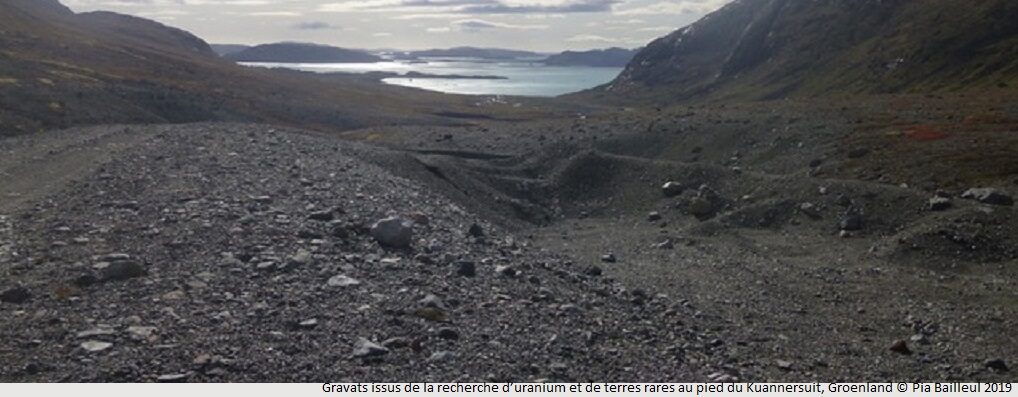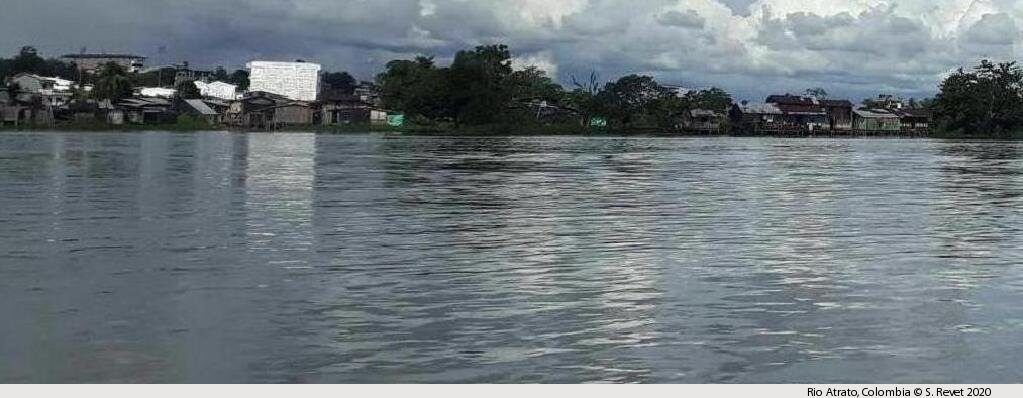Joëlle Smadja

Joëlle Smadja is a Geographer and a Senior Researcher (DR1), CNRS, member of the Centre for South Asian and Himalayan Studies (CESAH). She carries out research in Nepal and North-East India. Her work focuses on land use and natural resource management, on populations’ conceptions and representations of milieus, on the production of landscapes over time, on territorial restructurings, on environmental policies and explanatory narratives, from which the former originate, as well as on environmental conflicts. Her research takes into account physical data from milieus in their close interrelation with the societies occupying them and is related to environmental science, especially regarding issues concerning deforestation, the climate and erosion. This research is often carried out within interdisciplinary programmes.
https://himalaya.cnrs.fr/spip3/spip.php?article199&lang=fr&start=0
Selected Publications
✜ Edited Books
- 2013 Smadja, J. Territorial Changes and Territorial Restructurings in the Himalayas. Delhi, Adroit Publishers.
- 2009 Smadja, J. (ed.). Reading Himalayan Landscapes over Time. Environmental Perception, Knowledge and Practice in Nepal and Ladakh. Pondicherry, IFP, Collection Sciences Sociales n°14 [Transl. & adaptation of J. Smadja (ed.), Histoire et devenir des paysages en Himalaya. Représentation des milieux et gestion des ressources au Népal et au Ladakh, 2003].
✜ Chapters
- 2014 Smadja, J. « Les coûts d’une politique de protection de la nature ignorant les populations… en milieu densément peuplé. Le Parc national de Kaziranga en Assam (Inde du nord-est) », in L. Laslaz, C. Gauchon, M. Duval & S. Héritier (eds), Les espaces protégés. Entre conflits et acceptation. Belin: 366-382.
- 2013 Smadja, J. « Introduction. Legacies and Curent Trends: Characteristics of Territory-Making in the Himalayan Region », in J. Smadja (ed.) Territorial changes and territorial restructurings in the Himalayas. Delhi, Adroit Publishers: 13-30.
- 2013 Smadja, J. « How Environmental Policies Reshape the Himalayan Area. New Environmental Territories, New Environmental Borders; the Example of Kaziranga National Park (Assam) », in J. Smadja (ed.), Territorial changes and territorial restructurings in the Himalayas. Delhi, Adroit Publishers: 223-245.
- 2011 Smadja, J. « Belonging, Protected Areas and Participatory Management. The Case of Kaziranga National Park (Assam) and of the Misings’ Shifting Territory », in J. Pfaff-Czarnecka & G. Toffin (eds), The Politics of Belonging in the Himalayas. Local attachments and boundary dynamics.Delhi, Sage: 246-271.
- 2009 Smadja, J. « Introduction », in J. Smadja (ed.), Reading Himalayan Landscapes over Time. Environmental perception, Knowledge and Practice in Nepal and Ladakh. Pondicherry, IFP, Collection Sciences Sociales n°14: 1-28.
- 2009 Smadja, J. « Snippets of Knowledge Stolen from an Impenetrable Country », in J. Smadja (ed.), Reading Himalayan Landscapes over Time. Environmental perception, Knowledge and Practice in Nepal and Ladakh. Pondicherry, IFP, Collection Sciences Sociales n°14: 29-40.
- 2009 Smadja, J. « Geographic Units and Landscapes in Nepal. Local Terminologies », in J. Smadja (ed.), Reading Himalayan Landscapes over Time. Environmental perception, Knowledge and Practice in Nepal and Ladakh. Pondicherry, IFP, Collection Sciences Sociales n°14: 43-84.
- 2009 Smadja, J. « A Reading of the Salme Tamangs’ Territory and Landscape », in J. Smadja (ed.), Reading Himalayan Landscapes over Time. Environmental perception, Knowledge and Practice in Nepal and Ladakh. Pondicherry, IFP, Collection Sciences Sociales n°14: 199-239 & 563-589.
- 2009 Smadja, J., T. Bruslé & M. Fort. « A Bocage Landscape, Masyam and the Hamlet of Kolang », in J. Smadja (ed.), Reading Himalayan Landscapes over Time. Environmental perception, Knowledge and Practice in Nepal and Ladakh. Pondicherry, IFP, Collection Sciences Sociales n°14: 509-551 & 602-605.
- 2009 Smadja, J. »Conclusion », in J. Smadja (ed.), Reading Himalayan Landscapes over Time. Environmental perception, Knowledge and Practice in Nepal and Ladakh. Pondicherry, IFP, Collection Sciences Sociales n°14 553-559.
- 2006 Smadja, J. « Mesures gouvernementales et villageoises face à une situation dite de crise environnementale au Népal », in C. Beck, Y. Luginbühl & T. Muxart (eds), Temps et espaces des crises de l’environnement. Éditions Quae, collection INdiSciplineS: 319-332.
- 2006 Smadja, J., P. Allard & M. Roué. « Rôle du politique, de l’Etat et des groupes sociaux dans les discours sur la crise environnementale », in C. Beck, Y. Luginbühl & T. Muxart (eds), Temps et espaces des crises de l’environnement. Éditions Quae, collection INdiSciplineS: 301-312.
- 2003 Smadja, J., & M. Lecomte-Tilouine. « Au cœur de l’ancien Empire Malla, Népal occidental, un monde bouleversé par les mesures de protection des milieux », in T. Muxart, F.-D. Vivien, B. Villalba & J. Burnouf (eds), Des milieux et des hommes : fragments d’histoires croisées. Editions Elsevier: 161-172.
- 2000 Smadja, J. « Landscape Diversity and Water Availability », in P. Ramirez (ed.), Resunga, The Mountain of the Horned Sage, Two Districts in Central Nepal. Kathmandu, Himal Books: 1-50.
- 2000 Smadja, J. « Natural Resources, Uses and Landscapes », in P. Ramirez (ed.), Resunga, The Mountain of the Horned Sage, Two Districts in Central Nepal. Kathmandu, Himal Books: 198-221.
✜ Articles
- 2019 Abadia, C., O. Aubriot, J. Smadja, M. Vaillant, & M. Oswald. « Growth of market gardening for local sales in the Mount Everest tourist region of Pharak, Nepal« , Journal of Alpine Research | Revue de géographie alpine [online], 107–3. http://journals.openedition.org/rga/6402. (Open Access)
- 2019 Fort, M., J. Smadja, N.R. Khanal, & B.R. Shrestha. « Landslides and other damage to buildings and infrastructures following the April–May 2015 earthquake sequence, Solukhumbu District, Eastern Nepal », Journal of Nepal Geological Society, 2019, vol. 59: 95–106.
- 2019 Aubriot, O., M. Faulon, I. Sacareau, O. Puschiasis, E. Jacquemet, J. Smadja, V. André-Lamat, C. Abadia, & A. Muller. « Reconfiguration of the Water–Energy–Food Nexus in the Everest Tourist Region of Solu-Khumbu, Nepal« , Mountain Research and Development 39(1), (18 June 2019). (Open Access)
- 2018 Smadja, J.« A Chronicle of Law Implementation in Environmental Conflicts : The Case of Kaziranga National Park in Assam, North-East India », in D. Berti & G. Tarabout (eds), Through the Lens of the Law : Power and Society in India, SAMAJ (South Asia Multidisciplinary Academic Journal), 17. (Open Access)
- 2015 Smadja, J., O. Aubriot, O. Puschiasis, T. Duplan, J. Grimaldi, M. Hugonnet, & P. Buchheit. « Climate change and water ressources in the Himalayas. Field study in four geographic units of the Koshi basin, Nepal”, Journal of Alpine Research, No. 103–2/2015. (Open Access)
- 1995 Smadja, J. « Sur une dégradation annoncée des milieux népalais : initiatives villageoises pour remplacer les ressources forestière », Nature, Sciences et Sociétés, n°3, vol. 3: 190-204. (Open Access)



















